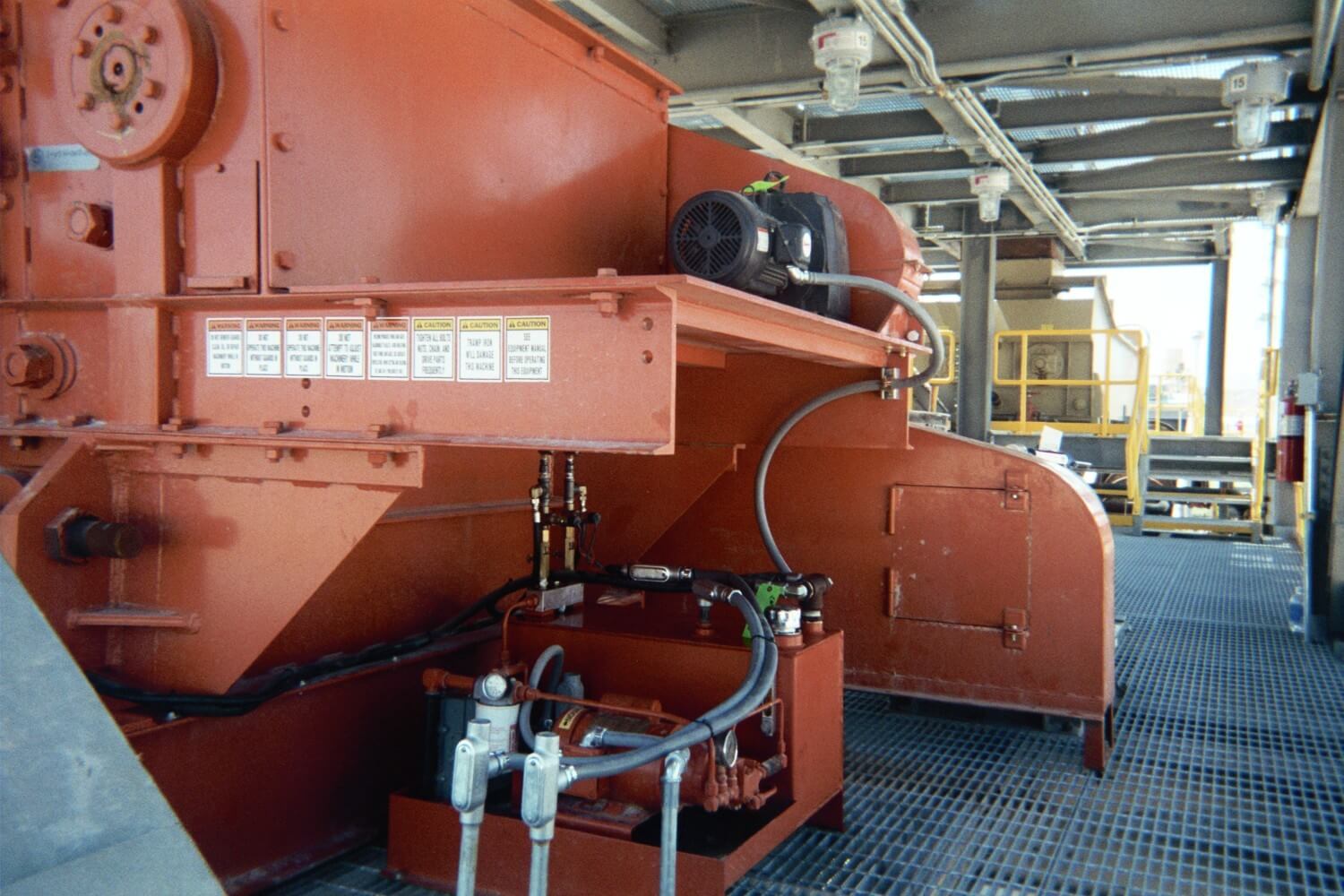Drive and power components are important not only for budgetary reasons, but also due to line power restrictions from the utility company. Hammermill Crushers often require a 1:1 ratio comparing horsepower to tph throughput. That ratio can grow to 3:1 for many applications, and even 5:1 when fine-grinding is required.
Direct drive via a flexible coupling is often the choice, when and if a motor of the same rpm can be locally sourced and serviced. However, this limits the ability to change rpm in case of changes in material formation or product specifications.
V-belt drive arrangements are very common for smaller mills, offer the ability to alter the speed with a sheave change and may be set up with one or two electric motors.
Dual motor drives allow for smaller standard frame motors, which may be more available at lower, competitive prices. You may also save on operating costs if one of the motors is wired with a solid state reduced voltage starter. Peak amperage draw is kept at a minimum when starting the crusher with the reduced voltage starter. The second motor is engaged via across-the-line starter only after the crusher is fully up to speed. Utility companies often charge a premium for peak amperage draw.
HammerMasters and LimeMasters are also available with replaceable tip hammers in lieu of the standard bullhead hammers. They are also offered with an optional feed chute to accommodate the conveyor feed.
Industrial Centerfeed Hammermills are also available with a trap mechanism located under the rotor at the central discharge point. This trap blocks the flow of material, forcing all the material to extrude through the grate openings. This trap also provides a relief for any tramp iron that may enter the chamber. A mechanical arm extends through the base frame to provide easy access when time to empty the trap, which is secured with a pivot pin and hinge.
Hydraulic access into the crusher is also available for the larger Industrial Hammermills. Not only can McLanahan offer hydraulic adjustment, the same hydraulic power unit can be used to open and close the access hatch for inspection and maintenance.
When a Hammermill is selected and recommended for a specific application, the crushing chamber with grates, impact plates and the hammers will be taken into account in the valuation of the Hammermill.







